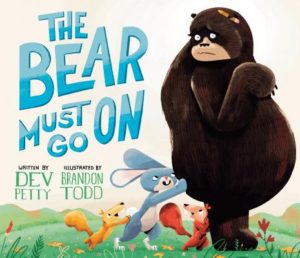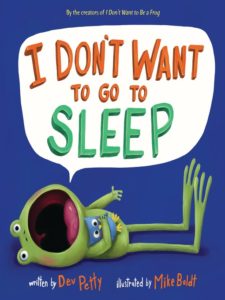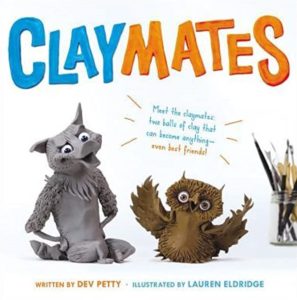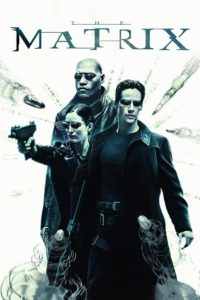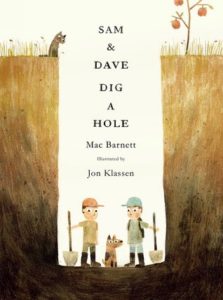
This month’s Author Interview is with Tampa Bay writer Anita Amin, an Indian American author of many kidlit books, with more than 100 published short stories and articles in children’s literary magazines (like Ladybug, Spider, Humpty Dumpty, and Highlights) and education resources. And if that doesn’t make you think she’s a hard worker, when I invited her to do this interview, she confessed that she has eleven (11!) chapter and leveled readers books going to be published between now and the end of 2021.
To help us get to know her a bit more, here are five facts about Anita:
- Born and raised in the US, she’s the daughter of Indian immigrants. “My family roots stretch across North India, from the royal desert of Rajasthan to the bustling river city of Kolkata.”
- She has a Biomedical Engineering and Electrical Engineering degree (from Duke) and an MS in Computer Engineering (NC State).
- She used to design microcomputers, and then had a long career in the IT field before becoming a writer.
- Her travel bucket list includes: Antarctica, Egypt, Iceland, and Morocco.
- She writes secret coded messages for her kids.
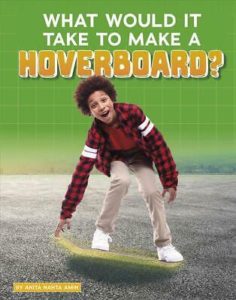 One final thing. Anita had two STEM books come out in 2020, and let me tell you, What Would It Take to Make a Hoverboard? is a book I would’ve loved as a kid, though I probably would’ve torn apart my mom’s station wagon to get the parts to try to build it, so maybe it’s a good thing it didn’t come out back then!
One final thing. Anita had two STEM books come out in 2020, and let me tell you, What Would It Take to Make a Hoverboard? is a book I would’ve loved as a kid, though I probably would’ve torn apart my mom’s station wagon to get the parts to try to build it, so maybe it’s a good thing it didn’t come out back then!
In any case, now that we’re all pals, let’s get to the interview and find out more about what makes Anita so prolific!
- Website: https://anitaaminbooks.com/
- Instagram: https://www.instagram.com/AnitaAminKidLit/
- Twitter: https://twitter.com/AnitaAminKidLit
RVC: In 2006, you left a long-time career in information technology to become a writer. Was that a sudden thing or had it been brewing for a long time?
AA: Actually, I left my job in 2006 to focus on family. I had no idea I would eventually become a writer, even though that had been my childhood dream.
As a child, I wrote short stories every day. I wanted to attend young writer workshops, instead of summer camps. I remember pausing by the barely open door of a high school literature class, wondering what they were discussing, wishing I could live in their world too. It was the only AP class, for which I hadn’t qualified; I was always stronger in math and science, and so in college, I pushed my dreams aside, believing I could never make it as a writer. I became a business consultant in information technology instead.
But deep down, my passion for writing never completely extinguished. After I left my job, I started to play around with words, writing short stories just for my own fun. Writing became my retreat. It made me feel happy and whole – just like when I was a child.
RVC: How did it actually happen for you?
AA: As I began to write more and more again, I started thinking maybe I could try to get a story published. But I had no idea where to start. Were my stories publishable? Were they the right format for submission? Was I even writing the “right” way? And what market did I want to write for? This is when I started to take classes, and as I learned more, I became serious about writing for children and writing for publication as my goal.
RVC: I think you’re the first OPB interviewee who’s taken classes at the Institute of Children’s Literature. Tell us about that organization, and how did it help you get your start?
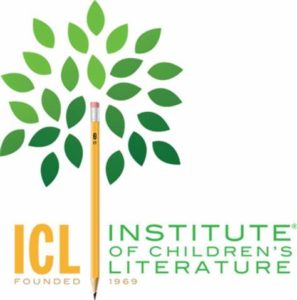 AA: The Institute of Children’s Literature (ICL) was a great way to start learning about the basics of writing for the children’s market. I took three classes: two about writing for magazines and one about picture book writing. In each course, ICL matched me with an experienced children’s editor or author, who critiqued my outlines, manuscripts, and revisions. Communication about assignments was through email.
AA: The Institute of Children’s Literature (ICL) was a great way to start learning about the basics of writing for the children’s market. I took three classes: two about writing for magazines and one about picture book writing. In each course, ICL matched me with an experienced children’s editor or author, who critiqued my outlines, manuscripts, and revisions. Communication about assignments was through email.
After ICL, I continued revising many of my assignments through other workshops and critique groups. Many of these revised stories were later published in print magazines and online educational resources such as Super Teacher Worksheets, which provides worksheets to teachers and homeschoolers all over the world. It’s always fun when I see a child bring home one of my stories as a homework assignment!
RVC: What kind of other things did you do to improve your writing skills in those early post-IT career days?
AA: I joined the Society of Children’s Book Writers & Illustrators (SCBWI), an international organization of children’s writers and illustrators, representing every stage from beginner to seasoned and published. Their discussion boards are helpful for learning more about the craft and industry and for asking questions. They also offer great learning and book promotion opportunities.
During my early post-IT days, I gravitated toward the magazine market because my first writing course was about short story writing. I identified the magazines I wanted be published in – like Humpty Dumpty and Highlights. I pulled apart the short stories in those magazines. How many sentences did each paragraph typically have? How many words per line and per paragraph? Did they typically run humorous or serious stories? I studied these stories for character growth and plot arcs. Analyzing mentor texts helped me learn how to write.
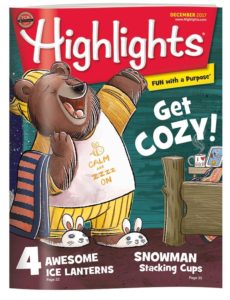 RVC: One of your early writing career highlights was, aptly enough, landing a short story in Highlights–one of those mags you studied so carefully. Tell us the story of that big success.
RVC: One of your early writing career highlights was, aptly enough, landing a short story in Highlights–one of those mags you studied so carefully. Tell us the story of that big success.
AA: Over four years, I tried getting published in Highlights. After several rejections, I took a break from submitting there. Even though I was slowly building up from first reader passes to personal rejections directly from the fiction editor, I had little hope that Highlights would ever accept one of my stories. It just felt impossible. So, I focused on magazines which had higher acceptance rates.
One ezine needed stories about Valentine’s Day. This theme inspired me to start writing a story, but I missed the ezine’s submissions deadline. I kept working on the story for several months more. Once it had been polished enough, I thought to myself, I really like this story. Maybe I should try submitting it to Highlights. So off it went in the mail (this was before electronic submissions). Imagine my surprise when I received a Bear Card back! Back then, Highlights used to send a “Bear with us” postcard – basically meaning it was seriously being considered for publication. Still, I didn’t want to get my hopes up. Another couple of months went by. And then I received my self-addressed stamped envelope back from them. I noticed the envelope had been carefully taped so nothing would fall out. But it was thick like several pages of a manuscript had been sent back to me. I opened the envelope and there was my letter. Highlights had accepted my short story, “A Valentine for Nanima,” which was published in their February 2013 issue.
RVC: Congrats on that. But that publication story has a hard-to-believe cool bonus element to it. Wanna share?
AA: My acceptance to Highlights came the same day I found out I was going to be a mama – of twins! A boy and a girl, complete opposites and best friends.
RVC: In 2016, you decided to expand your writing to include picture books. How did that transition go?
AA: It was harder than I realized! Initially, I thought writing picture books would be similar to writing magazine stories, because the word counts are about the same. But after taking classes and workshops and analyzing other picture books, I found out I was wrong! Chapter books (I write these as well) are probably a more natural transition from magazines.
In picture books, page turns (how the text ends on a page to make the reader want to turn to the next page) are important. The book relies on art work to tell the story as much as the text. You don’t need to worry about these with short stories.
Joining an organization like Julie Hedlund’s 12 x 12 Picture Book Writing Challenge has been fundamental in learning more about picture book writing and keeping up with the market. Through this organization, I’ve also learned about work-for-hire opportunities and have written several leveled readers and chapter books, including What Would It Take to Make a Hoverboard? and What Would It Take to Make a Jet Pack? (Capstone Press, January 2020). It felt good to put my STEM skills to use again.
RVC: Your debut picture book, Raja’s Pet Camel: The Magic of Hope, came out last week.
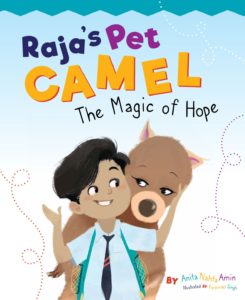 AA: My publisher, Cardinal Rule Press, organized a live virtual launch on October 1, 2020, the release day for Raja’s Pet Camel: The Magic of Hope. I read the book to viewers, showed some photographs of the Thar Desert, which is where the book is set, and answered questions from my publisher as well as the audience.
AA: My publisher, Cardinal Rule Press, organized a live virtual launch on October 1, 2020, the release day for Raja’s Pet Camel: The Magic of Hope. I read the book to viewers, showed some photographs of the Thar Desert, which is where the book is set, and answered questions from my publisher as well as the audience.
RVC: How did the launch go?
AA: The launch went great – above my expectations! This is in large part due to the strength of my publisher and her team, and the amazing support of my family and friends, the kidlit community, my debut picture book group, critique partners, and my launch team. Launching a book is definitely a community effort.
RVC: What’s the elevator pitch for the story?
AA: Raja is a little boy in India who loves his new pet: a mischievous, date-loving, baby camel named Kamal. But his father is fed up and determined to sell the camel at the next fair. Raja must use the power of hope to try and change his father’s mind or he might lose Kamal forever.
RVC: What was the breakthrough moment with this manuscript? When did it all finally work?
AA: The process for this book spanned 11 years! I happened to come across a photo I had taken in the Thar Desert in Rajasthan, India of a little boy playing with his camel. This inspired me to write a couple of lines in my writing journal: a little boy throws his arms around his camel, not wanting to sell her, while his dad makes a campfire. (This would later form the desert scene in Raja’s Pet Camel.) The idea was for a short story for ages 8 to 12.
My thoughts sat in that notebook for a few years. Then I took an advanced class at the Institute of Children’s Literature and realized maybe my short story idea would make a better picture book.
At around the same time, I started remembering how there are a lot of animals in India, but hardly any pets. My kids had been asking for a pet, but I kept worrying about how much mischief a pet could make.
This is when the pieces fell together, and I realized the story should be a picture book about a little boy in India trying to stop his mischievous pet camel from being sold at the next fair. This story continued to change through workshops and critiques but the theme stayed the same.
RVC: Rumor has it you had a memorable childhood experience with a camel.
AA: Yes! My first trip to India was when I was three years old. I was in awe of all of the camels and wanted to ride one. My dad set me on a camel’s back, and I was just fine – until the camel stood up! It’s pretty high up there for a three-year-old. I started crying and screaming, and this is when we realized I’m terrified of heights – and still am.
RVC: Raja’s Pet Camel has interesting back matter about the Thar Desert. What are your goals for back matter? Got a good mentor text or two that uses back matter in a way you admire?
AA: I see back matter as a way to explain cultural elements found in the story or to supplement the story with additional information.
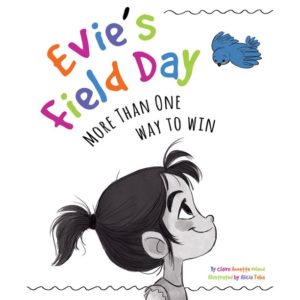 When my publisher asked me to include the top 10 facts about the Thar Desert, I was happy because most of the facts I’ve personally experienced. I drew inspiration from my memories and experiences, when deciding which facts to include so they also have a personal connection to me. I used Evie’s Field Day by Claire Noland as a mentor text for my book; it’s published by Cardinal Rule Press too, so I could see what type of back matter and how much detail my publisher likes.
When my publisher asked me to include the top 10 facts about the Thar Desert, I was happy because most of the facts I’ve personally experienced. I drew inspiration from my memories and experiences, when deciding which facts to include so they also have a personal connection to me. I used Evie’s Field Day by Claire Noland as a mentor text for my book; it’s published by Cardinal Rule Press too, so I could see what type of back matter and how much detail my publisher likes.
For back matter I also enjoy reading author notes because they often tell their own story. Some of my favorites have been in Numenia and the Hurricane: Inspired by a True Migration Story by Fiona Halliday and The Boy Who Dreamed of Infinity: A Tale of the Genius Ramanujan, written by Amy Alznauer and illustrated by Daniel Miyares. It was fascinating to learn about the inspiration behind both books.
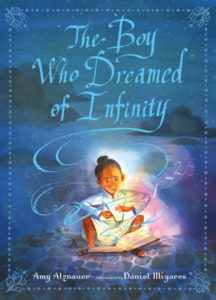 RVC: Daniel Miyares is one of our grads here from Ringling College. He’s done some great work!
RVC: Daniel Miyares is one of our grads here from Ringling College. He’s done some great work!
AA: I definitely liked the illustrations for that book!
RVC: I’m watching the #OwnVoices movement in kidlit with great interest. Beyond the obvious—opening the door for more diverse voices to find audiences—what else do you see happening as a result?
AA: Aside from the beauty of seeing more diverse voices and building bridges with other cultures, I think the #OwnVoices movement will help preserve cultural history and track how cultures change over time. Verbal stories can get lost over time. But if we write them down and they’re published for all to see, it will be that much harder to erase a culture and their stories from history.
RVC: What’s your writing process like? How involved is husband Jay and the kids?
AA: Very involved! My husband is my first Editor-in-Chief and often critiques my stories. My kids love to be involved, from helping to pick character names to reading my stories and providing feedback. They have some great ideas! My family has been amazingly supportive. I’m so lucky.
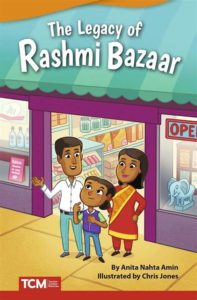 My writing process starts with my notebook and pen, even for my longer books like The Legacy of Rashmi Bazaar (Teacher Created Materials, 2019), a short chapter book for middle graders. I detest typing on the computer, so I write as much as I can in my notebook: fragments of ideas, outlines, paragraphs. On the rare occasion I’ll write out the whole story in my notebook, but normally I move to the computer for that. Once I’ve written a full draft, I let it sit for a few days at least – often weeks – and then go back and revise. I’ll let it sit again, revise, repeat, until the manuscript feels right.
My writing process starts with my notebook and pen, even for my longer books like The Legacy of Rashmi Bazaar (Teacher Created Materials, 2019), a short chapter book for middle graders. I detest typing on the computer, so I write as much as I can in my notebook: fragments of ideas, outlines, paragraphs. On the rare occasion I’ll write out the whole story in my notebook, but normally I move to the computer for that. Once I’ve written a full draft, I let it sit for a few days at least – often weeks – and then go back and revise. I’ll let it sit again, revise, repeat, until the manuscript feels right.
RVC: A final question for this part of the interview. Looking back at when you switched to a writing career, where did you think it’d lead you?
AA: My plan in 2006 was to write short stories and eventually have one published in a magazine. I never expected to have one book published, much less seven by the end of 2020, with more forthcoming and so many short stories published in magazines and educational resources. I’ve been lucky and blessed so far!
RVC: Okay, we’ve reached that point in the interview where the point values are doubled, the stakes are raised, and it’s all about zippiness, because…it’s the SPEED ROUND!
Anita, are you ready?
AA: Ready!
RVC: Best place in Tampa for Indian food?
AA: Gateway to India, though it’s actually in St. Pete.
RVC: If you had to live the life of a picture book character for a day, who’d it be?
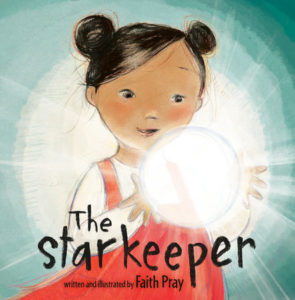 AA: The little girl in Faith Pray’s The Starkeeper because she spreads hope to everyone
AA: The little girl in Faith Pray’s The Starkeeper because she spreads hope to everyone
RVC: You’re caught singing in the shower. What song’s the likeliest culprit?
AA: None. That’s prime brainstorming time!
RVC: Which of your twins is most likely to become a kidlit writer?
AA: Both. They both love to write short stories and short chapter books.
RVC: What’s the wear-it-out favorite picture book in your family?
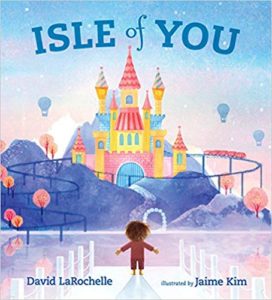 AA: There are so many! Hmm… My children’s favorites are Isle of You written by David LaRochelle and illustrated by Jaime Kim and Finding Winnie: The True Story of the World’s Most Famous Bear, written by Lindsay Mattick and illustrated by Sophie Blackall.
AA: There are so many! Hmm… My children’s favorites are Isle of You written by David LaRochelle and illustrated by Jaime Kim and Finding Winnie: The True Story of the World’s Most Famous Bear, written by Lindsay Mattick and illustrated by Sophie Blackall.
RVC: The writing motto/quote you’ve found most useful over the years?
AA: “The purpose of a writer is to keep civilization from destroying itself.” –Albert Camus
RVC: Thanks so much, Anita!

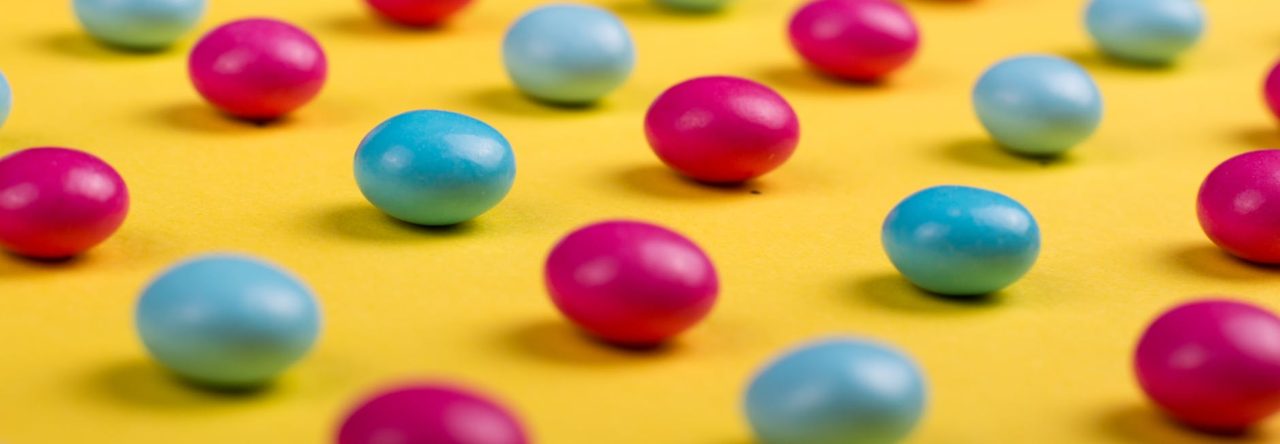

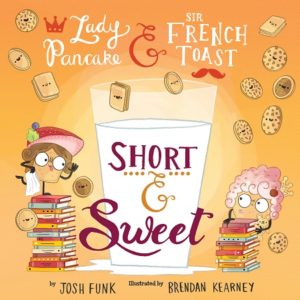
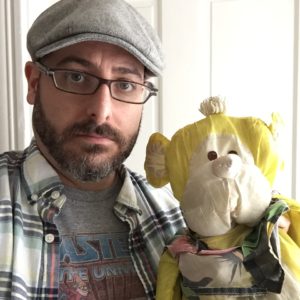
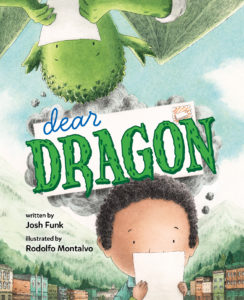

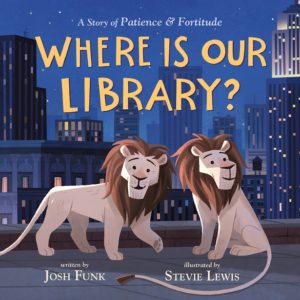
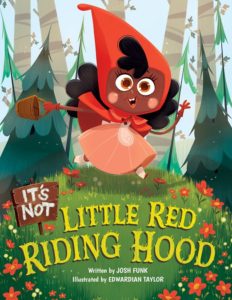 On that same day, the third book in the It’s Not a Fairy Tale series is being released:
On that same day, the third book in the It’s Not a Fairy Tale series is being released: 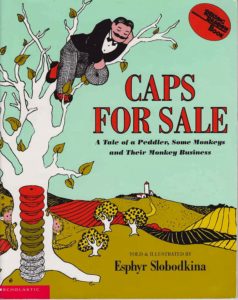
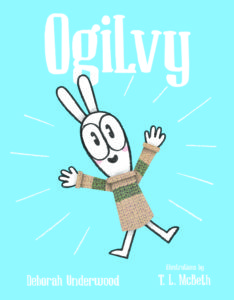
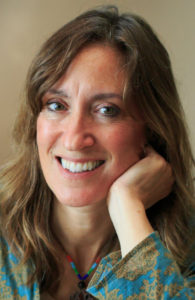 I’ve been posting weekly at
I’ve been posting weekly at 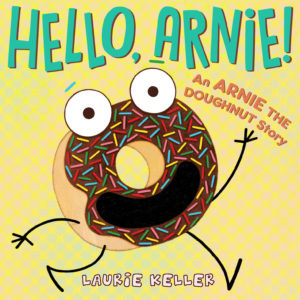
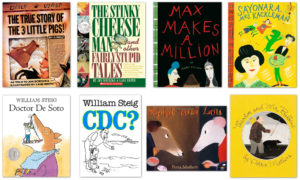
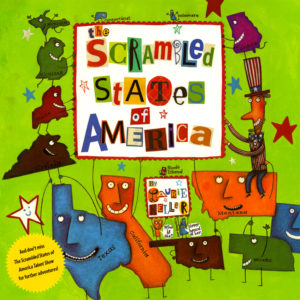
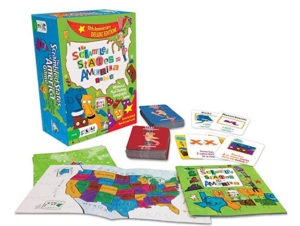
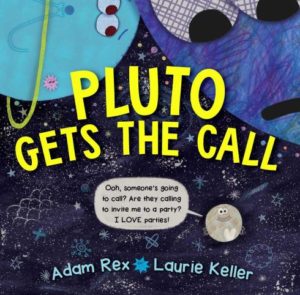
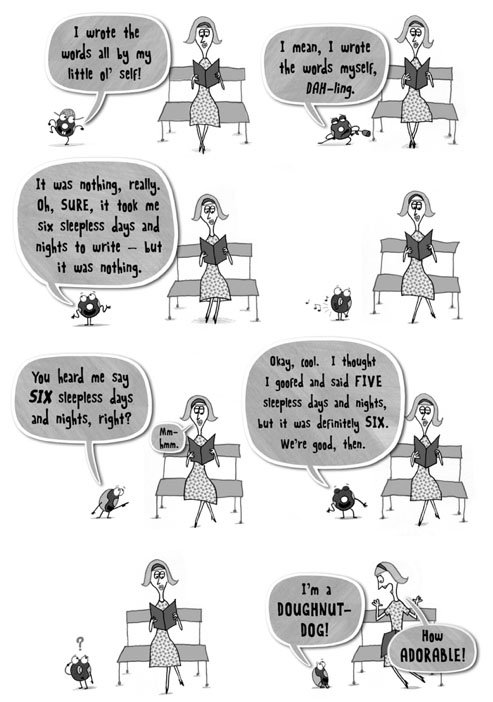
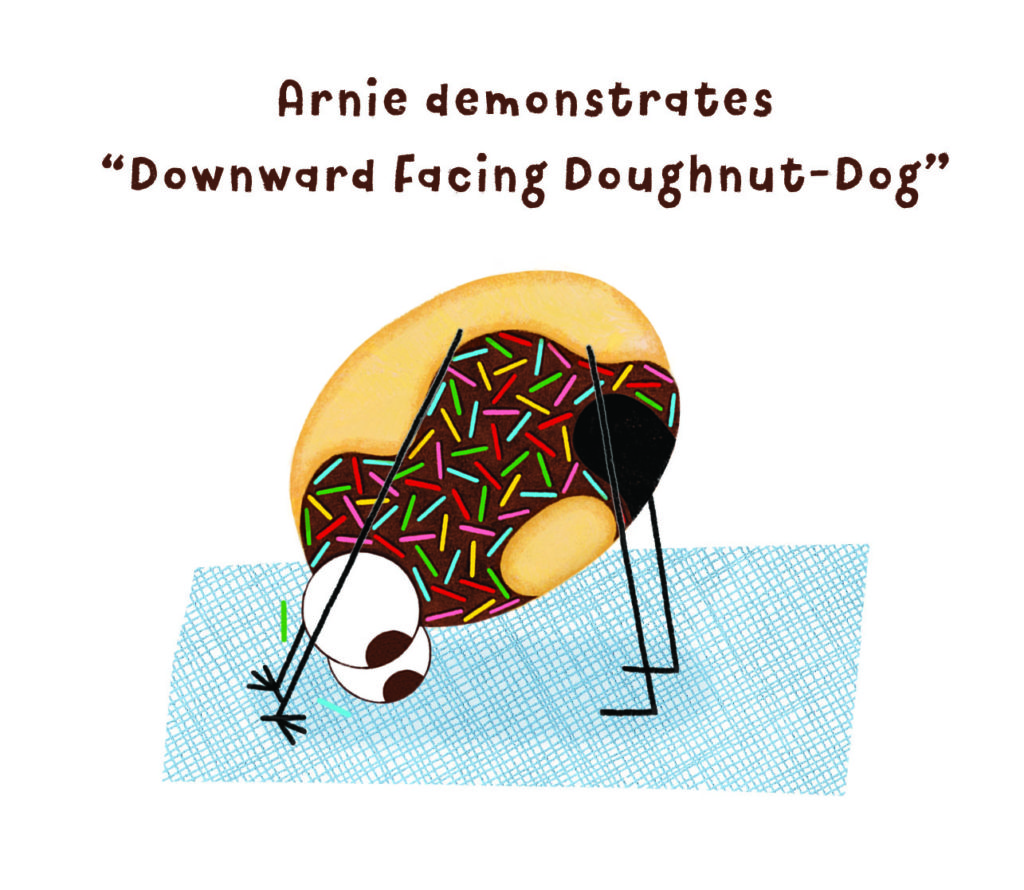
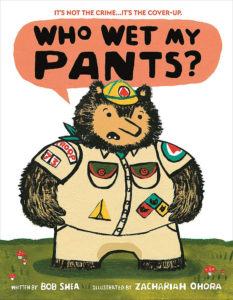
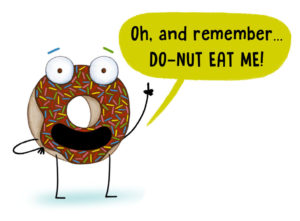
 It’s always a treat to be able to showcase the work of a debut picture book author, and with this month’s Author Interview, that’s what we’re doing. Minnesota author Kristen Schroeder’s first book,
It’s always a treat to be able to showcase the work of a debut picture book author, and with this month’s Author Interview, that’s what we’re doing. Minnesota author Kristen Schroeder’s first book, 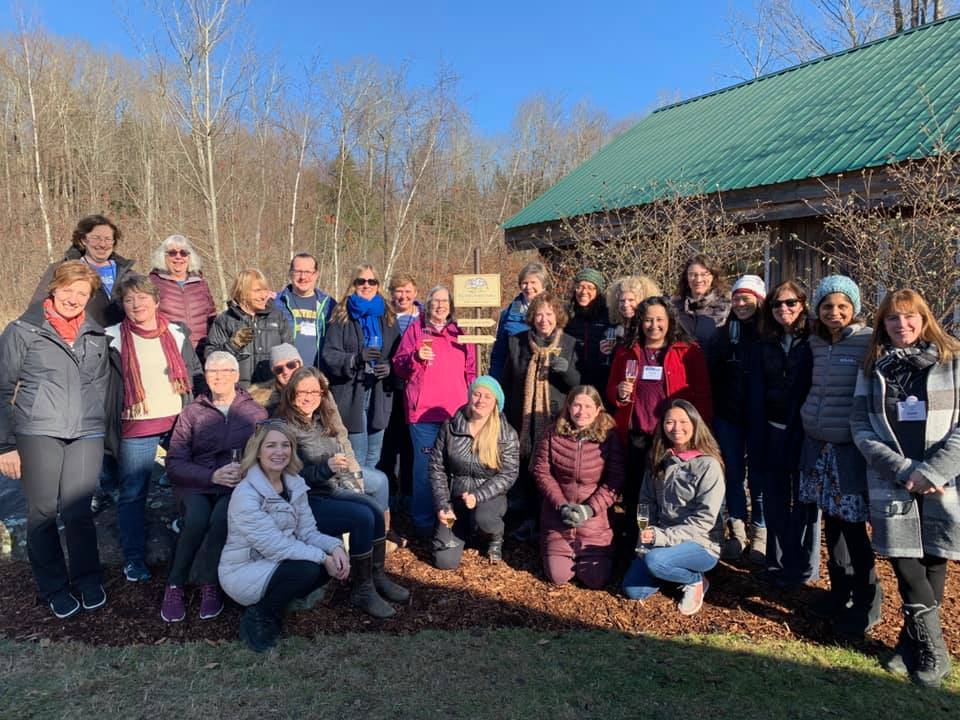
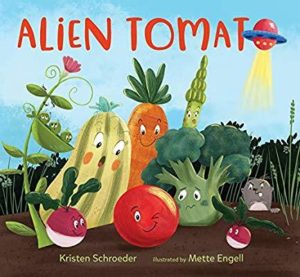
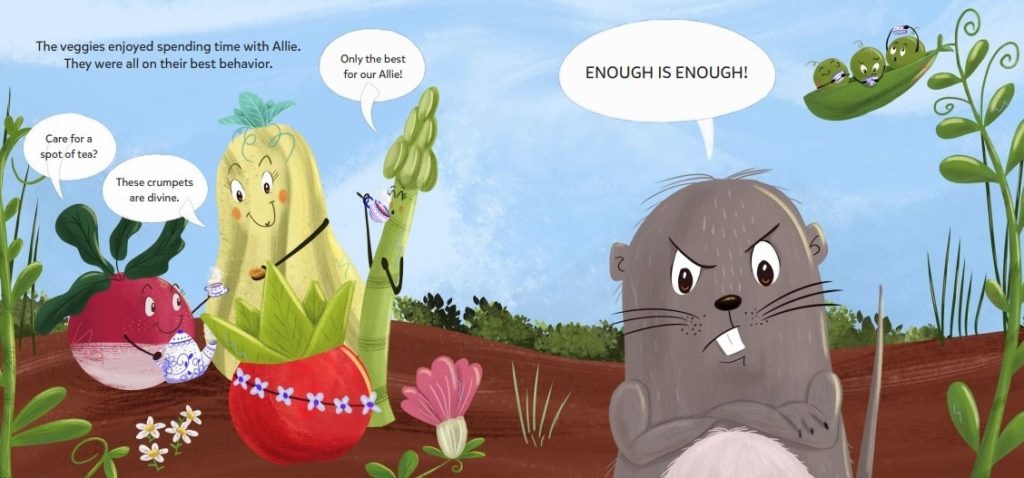
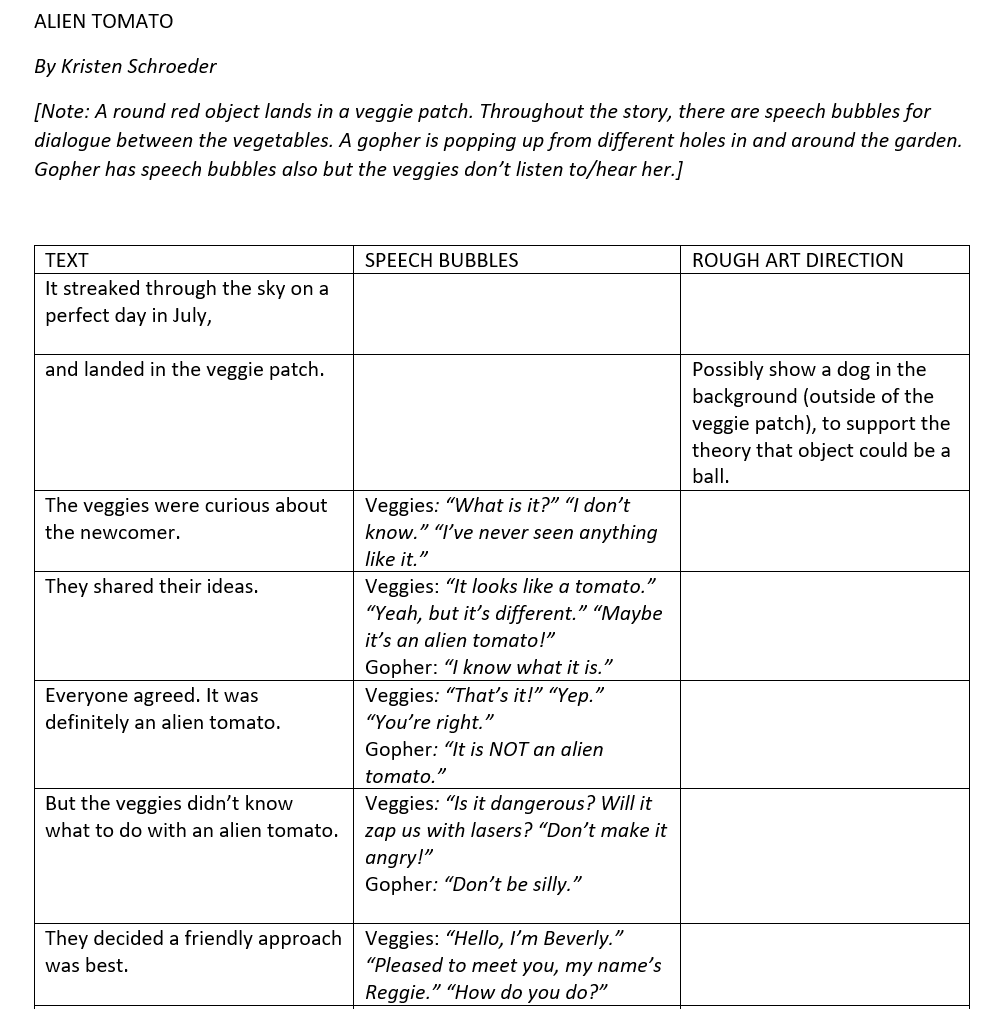
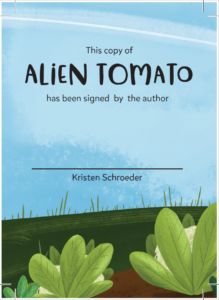
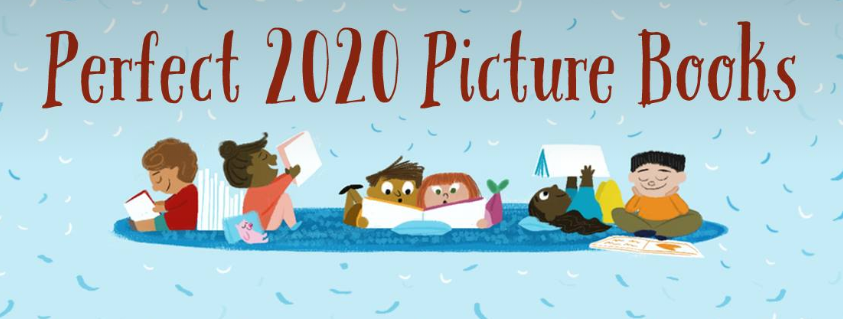

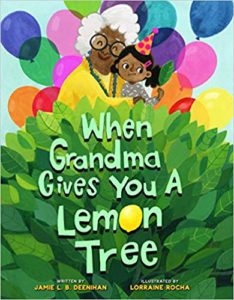
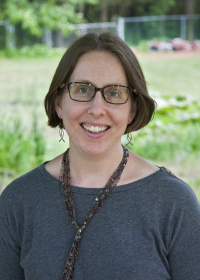 This month’s Author Interview is with Laura Renauld, a kidlit writer living in Northern Virginia. I normally spend a good bit of time carefully crafting a unique biographical statement by way of an introduction, but when I saw Laura’s Twitter bio, I surrendered. Why mess with perfection?
This month’s Author Interview is with Laura Renauld, a kidlit writer living in Northern Virginia. I normally spend a good bit of time carefully crafting a unique biographical statement by way of an introduction, but when I saw Laura’s Twitter bio, I surrendered. Why mess with perfection?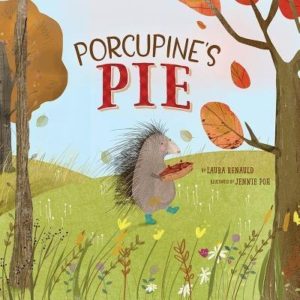
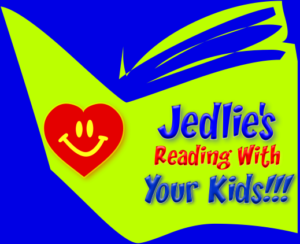
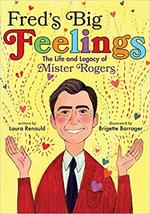
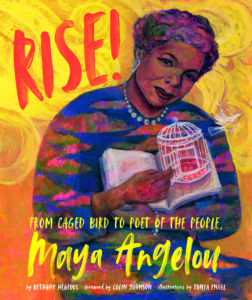
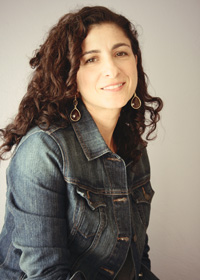 This month’s author interview is with Dev Petty, a former Visual Effects artist who “sat in a terribly dark room for ten years working as a texture painter” for films like
This month’s author interview is with Dev Petty, a former Visual Effects artist who “sat in a terribly dark room for ten years working as a texture painter” for films like 